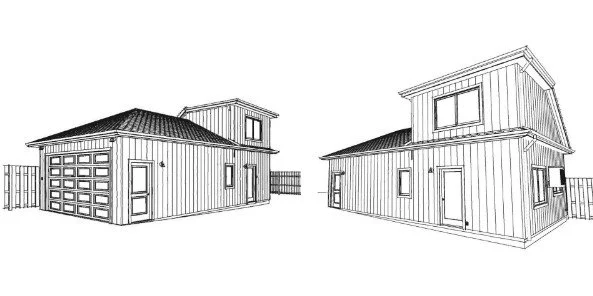What you Need to Know about Progress Draw Scheduling
Learn more about milestone-based draws for residential construction projects like home additions, custom home builds, and major renovations
When you hire someone to complete work on your behalf, there is a definitive milestone that is reached when the work is completed (to the satisfaction of the payer) or stipulated in an agreement that the payee has created. Usually when the work is simple there is only 2 payments, one for a deposit and one when the work is completed.
Now what happens when the work being completed spans over months and has dozens (if not hundreds) of milestones? This accurately describes the work completed in home renovations, home additions, and new home building, and it is the job of the General Contractor (payee) and Home Owner (payer) to come up with and agree to a schedule of payments that are fair and accurate to the work being completed.
In this article, we outline the only way we think General Contractors and Home Builders should be paid, and that is by use of Progress Draw Scheduling. This method of payment for complex renovations and home building projects is the safest and most efficient way to ensure you are going to achieve a successful residential construction project.
What is Progress Draw Scheduling in Residential Construction?
As the name describes, progress draw scheduling is a method of paying for complex services or projects (multiple steps involved) based on when milestones are achieved (i.e. house framing complete with passed inspection), or when materials need to be ordered (i.e. lumber package for framing a house). A draw is a singular payment made based on the materials and services provided in the chunk of time between two milestones, and should mirror the amount of cost shown on the General Contractor’s scope of work and budget schedule (including any ongoing costs like labour, materials, disposal and project management).
The number of draws in a project depends on the length of time the project takes, the complexity of the project, and the total project cost. You can expect anywhere between 10-20 draws depending on the type of complex residential construction project you are completing.
Why do you need progress draw scheduling for your construction project?
As we eluded to above, you wouldn’t pay for work that isn’t completed if the job was smaller, right? That is the basic principle behind progress draws, you can see the work being completed in front of you and your General Contractor has proof that their time and spending is being allocated towards your project. There is no other way to pay your General Contractor besides completing progress draws.
Why are Draw Schedules important to know before signing a contract?
It is paramount to get a proposed draw schedule for your project in writing before signing a contract with a General Contractor. This will protect you in the case that the company you hire tries to charge you more than what is outlined. Note that draw schedules are dynamic throughout a project as the project evolves and changes are made to the scope of work, so don’t expect that the draw schedule provided to remain the exact same as before the project starts, but at the very least make sure that you can see the amounts and when they are due so you can have something to fall back on if a dispute arises.
The secondary benefit to getting a draw schedule early on in the pre-construction process is it will allow you to gauge cashflow throughout the project so you can ensure you will have the right amount of funds in the right account at the right time!
What questions can I ask a home builder or general contractor to make sure that they will do milestone-based billing?
These are a set of questions you can ask a General Contractor when evaluating them to complete your renovation or home building project:
How many draws do you typically have for a project like ours?
What is a typical draw amount and, if they differ, why do they change?
How do you charge your fixed fees (like project management) within your draw schedule? Note that they should spread the payments out across the number of draws
Can you send a sample draw schedule for us to review?
Conclusion
When evaluating General Contractors, it is always good to have a toolbox of methods to ensure you are picking the right company. Make sure that you add progress draw scheduling to your evaluation toolbox, and best of luck with picking the right renovation contractor or home builder!
About BVM COntracting
BVM Contracting is a full-service General Contractor or Home Builder located in Toronto. We provide home renovation and building services for major home renovations (kitchen renovations, bathroom renovations, basement renovations, full interior renovations, home additions, lot severances, and new home construction). Our goal is to help guide our clients through the process of renovating their home, from concept to completion.
Further than providing General Contracting and Project Management for major home renovations, we also offer value-added services such as renovation financing, renovation rebate consultations and services, building permit and design services, smart home installation services, and real estate investor services.
To learn more about our offering by visiting our services page.






